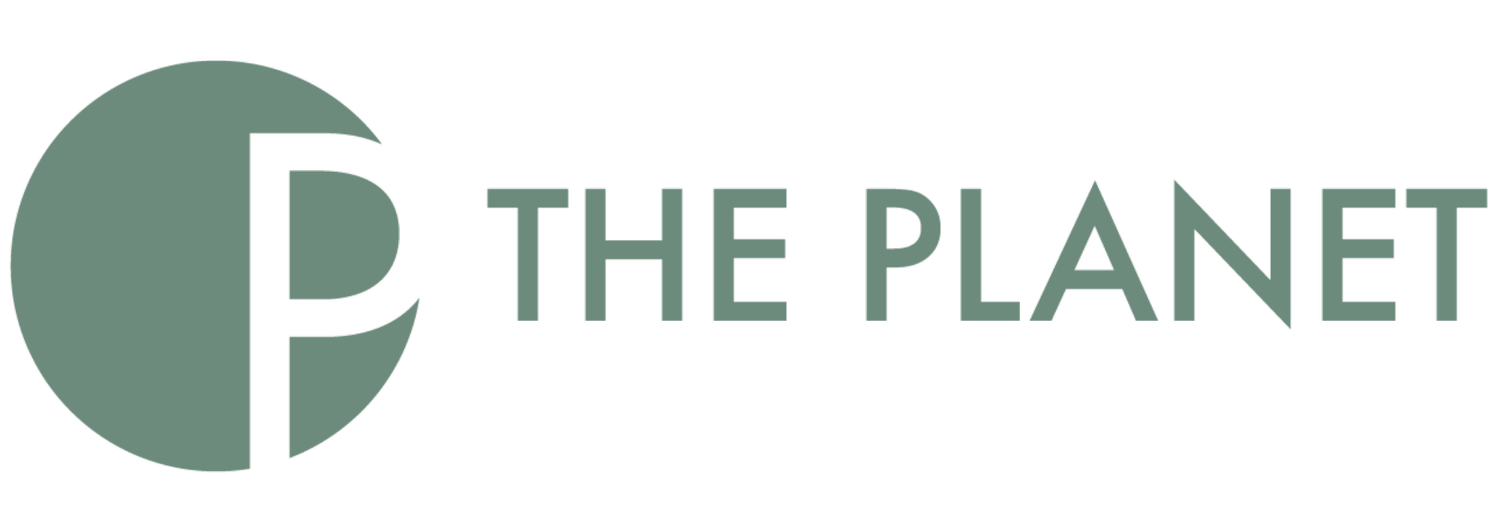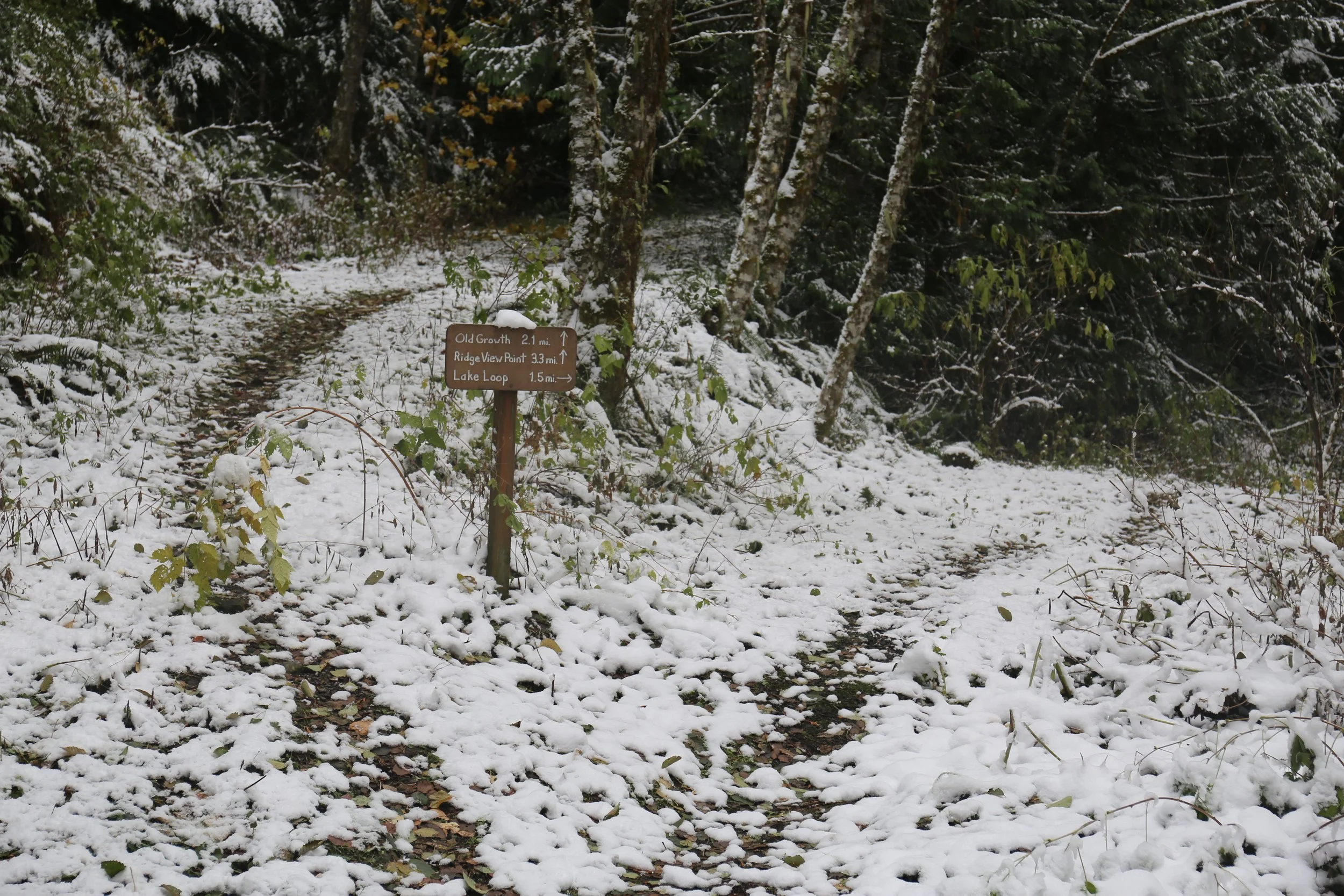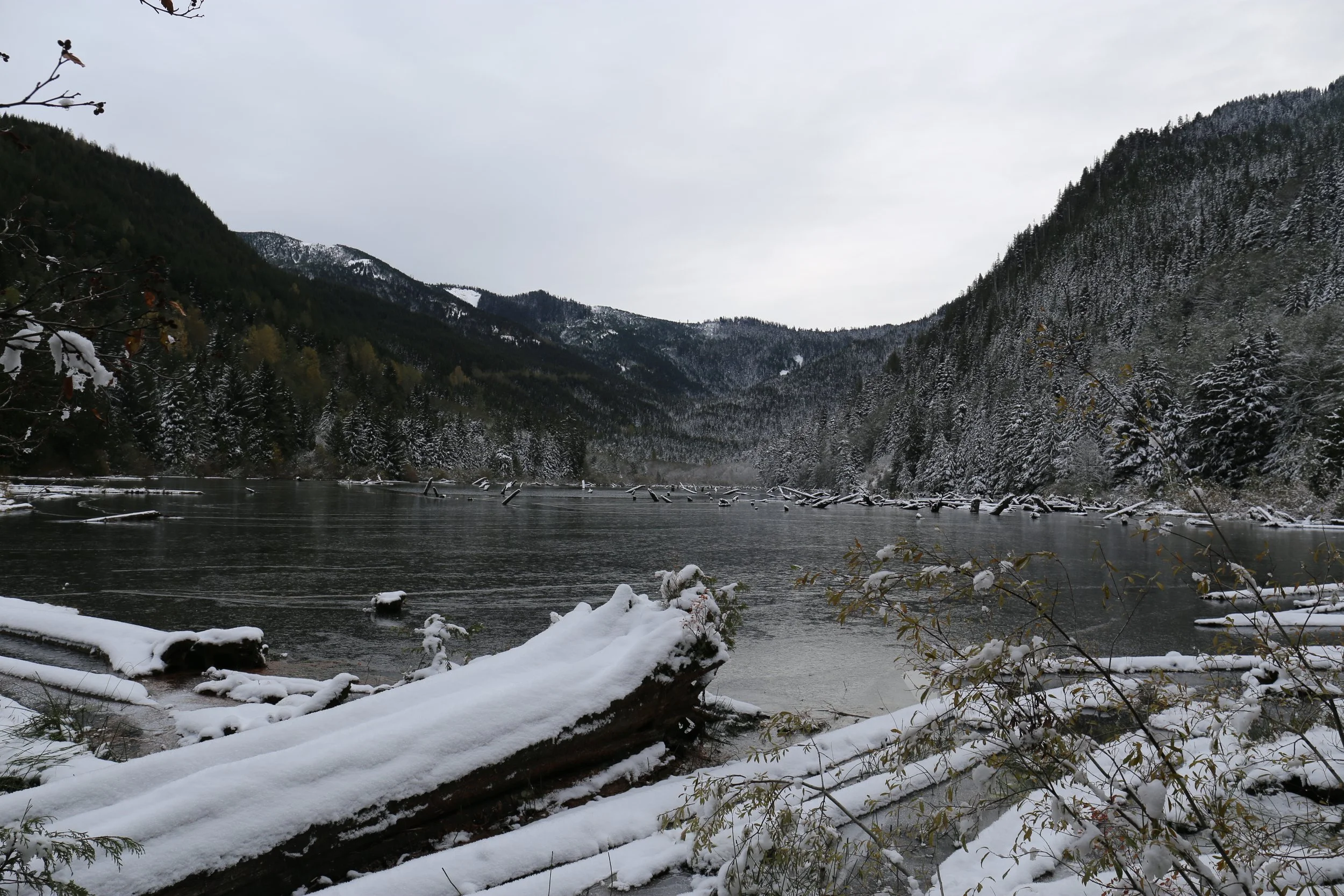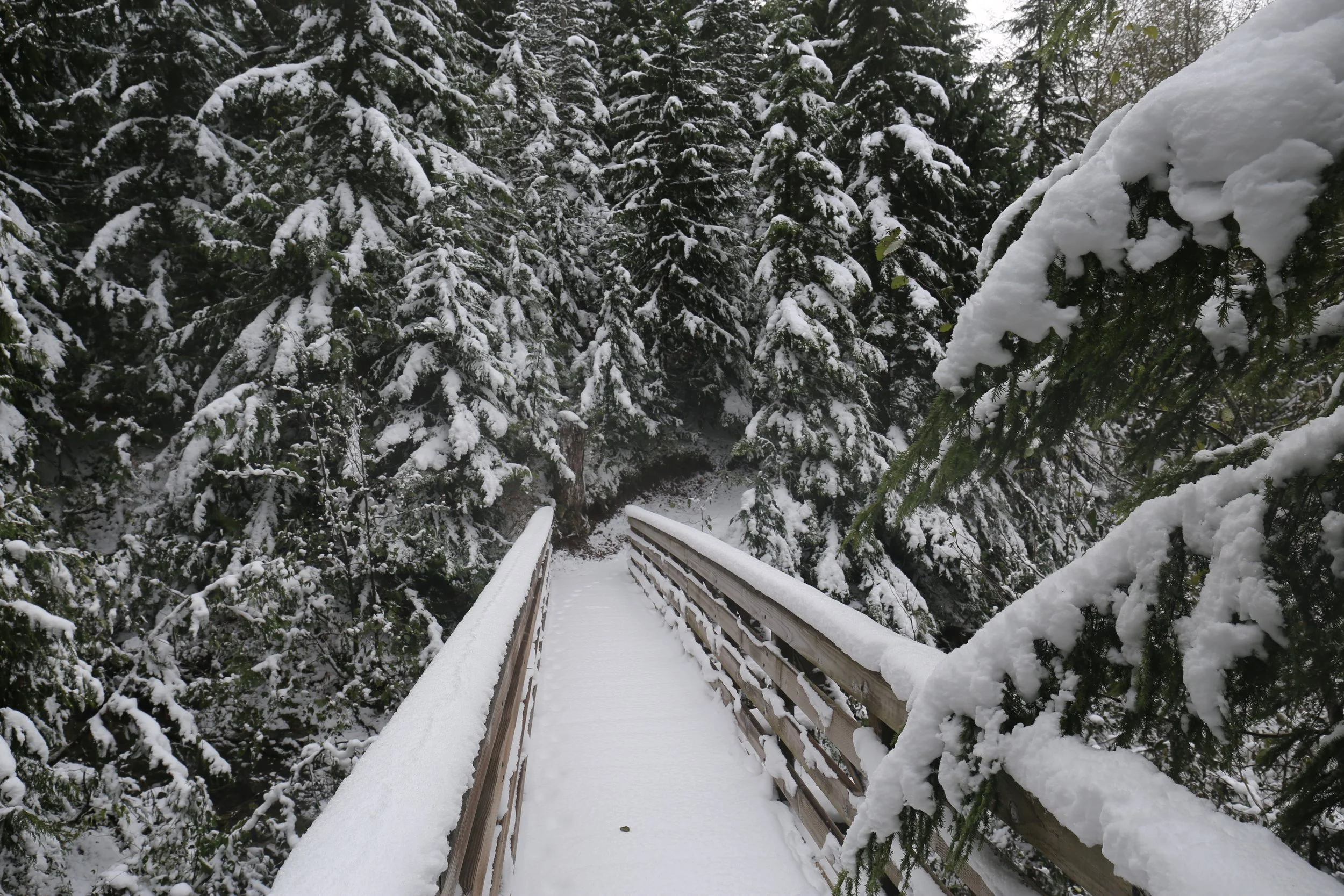The Hushed Community Forest
Canyon Lake Community Forest is a unique asset to Western. Without a key, it’s largely inaccessible for students who could otherwise learn from the forest’s ecology.
Story and photos by Charles Rasco
December 7, 2022
In the late 1990s, Western Washington University (WWU) co-purchased a property outside of Bellingham with an ecologically diverse lake and one of the most mature old growth forests in the Pacific Northwest. Open to the public and often visited by WWU students for research, Canyon Lake Community Forest is home to many unique natural features. However, a 2009 storm washed out a bridge on the main road, largely restricting access and hiding this unique property from the public eye.
Visitation to the property has decreased, WWU has stopped holding field trips and applications to the research stipend have stagnated since the road was washed out. Reaching the trailhead now requires a four-mile hike or bike on Canyon Lake Road. To regain access, students’ current options are either to pressure the owners to build a new bridge or a private timber company to allow public access on their alternate road.
At the trailhead, visitors will find a 50-million-year-old fossilized palm frond, a lake with unique plant communities formed by a landslide 150 years ago and two different trails leading around the lake or up to the nearly thousand-year-old forest. The old growth forest is unique because it has survived the history of active logging in that area, thanks to its hard-to-reach location on the steep side of the south ridge.
Trails at Canyon Lake Community Forest show few signs of human use, and are in need of maintenance.
In the current state, students are missing opportunities for class field trips and use of the research stipend available at Canyon Lake Community Forest. WWU students have investigated wildlife habitat after logging, subalpine tree growth and a link between a watershed’s soil quality and water quality.
“It’s a fantastic place to do research,” said Ed Weber, a graduate program coordinator at WWU’s College of the Environment. “There are some rare and unusual creatures up there. It’s a great place to go if you can get there.”
Canyon Lake Community Forest originated from the hard work of Tommy Gaines, a WWU graduate student in the early 90s who lived in the Canyon Lake watershed. In 1983, a rain-on-snow event caused washouts, increasing public awareness about the effects of clear cutting on lower streams in the watershed firsthand. Gaines published his master’s thesis studying potential wildlife habitat in the watershed a decade later. Canyon Lake Watershed has a high erosion potential, which clear cutting can accelerate, a later study would show.
In the 90s, the current Canyon Lake property changed ownership multiple times between private timber companies, all of which logged different sections of the area except for the final old growth, which remains standing due to awareness raised by Gaines and a team of forest activists. During that time, Whatcom Land Trust worked to organize the property’s purchase by WWU and Whatcom Parks with the help of the Paul G. Allen Forest Protection Foundation.
“He was a catalyst for forest activism, and he was really a hard worker at it,” said Andy Ross, who knew Gaines at WWU and helped establish the stipend in his honor. “He was also exceptionally kind.”
Old growth in the upper, far right section of forest overlooks Canyon Lake, dusted in snow.
Last spring, WWU Environmental Policy student Jade Weston saw the missed opportunities at Canyon Lake and created a petition on change.org to raise awareness about the property and to pressure public leaders to act about the inaccessibility.
“We pay tuition to Western, and part of that is access to all of Western’s assets, so we should have access to Canyon Lake,” Weston said.
The petition received over 200 signatures and was presented to WWU’s AS Student Senate as well as a Whatcom County Council member. The ASWWU released a statement acknowledging the need to address the access problems at Canyon Lake.
“If it was open, then the Tommy Gaines scholarship would be applied to a lot more, and students would have more of an opportunity to learn in different ways,” said Weston. “I think that Andy Bach would take his field trip for our class up there if it was available.”
That same spring, Whatcom County Executive, Satpal Singh Sidhu, sent a letter to the private timber company, Sierra Pacific Industries (SPI), requesting permanent easement on their road for public access. SPI owns the road to the community forest, but it is gated and only open to the public in August for the annual black bear hunt. SPI’s Community Relations Representative, Lisa Perry, declined to be interviewed but stated that the county is currently in negotiations with SPI. Together, they are working to identify ecosystem-safe access options, but they are not able to provide more information until negotiations are complete, Perry said.
The other option is to rebuild the bridge that washed out twice in the 2000s, the second being the storm that cut off access to the forest.
A bridge crosses Canyon Creek on the trail to the old growth forest.
“To really fix that bridge, they are going to have to install a huge bridge to get way up above the flood level, and that’s too expensive for the county at this point,” said Andy Bach, a geography professor at WWU. “[Whatcom Land Trust] has money, and they are usually good partners in these things. Western has had no interest in it. I brought it up at our faculty meeting trying to get it on a budget, and it was crickets. No one [was] even saying anything.”
As of now, the trailhead at Canyon Lake Community Forest seldom sees visitors. The future lies in the decisions of public leaders and the students at WWU, who believe they deserve to be able to do research at Canyon Lake or to take a field trip with their geography professor to the old growth forest. Current discourse is contingent, which only leaves room for action. WWU students were promised access to this community forest for research, education and passive recreation. The forest is now sitting idle, waiting for the public to fulfill these purposes.
“I hike in the Cascades a fair amount, and I have to say, the most animal sounds I have ever heard is in Canyon Lake,” said Bach. “The student group is great. If they can maybe put some pressure on the legislature and talk to the right person, maybe we can get some legislation for some money.”
Charles Rasco is an environmental studies student at Western’s College of the Environment. He enjoys exploring new wilderness areas and learning about the history of the Pacific Northwest.



